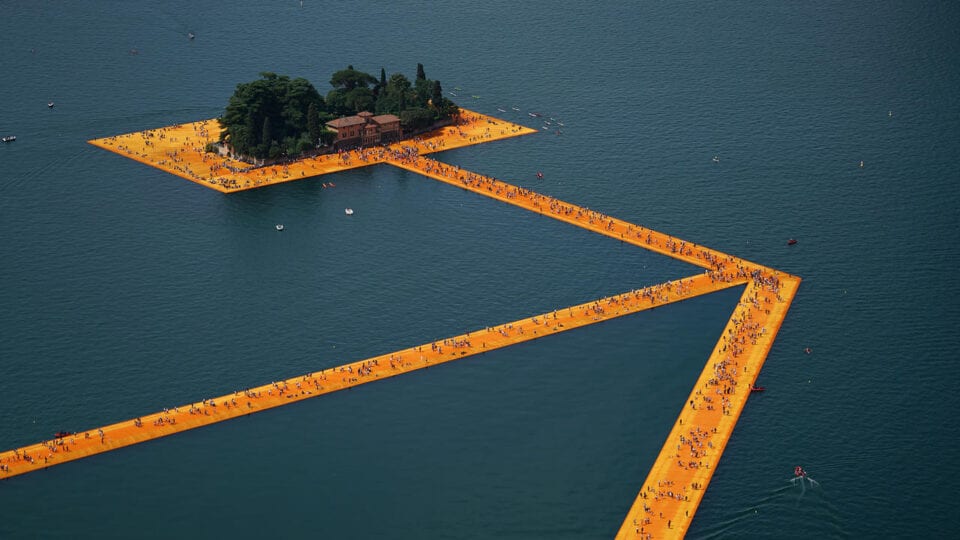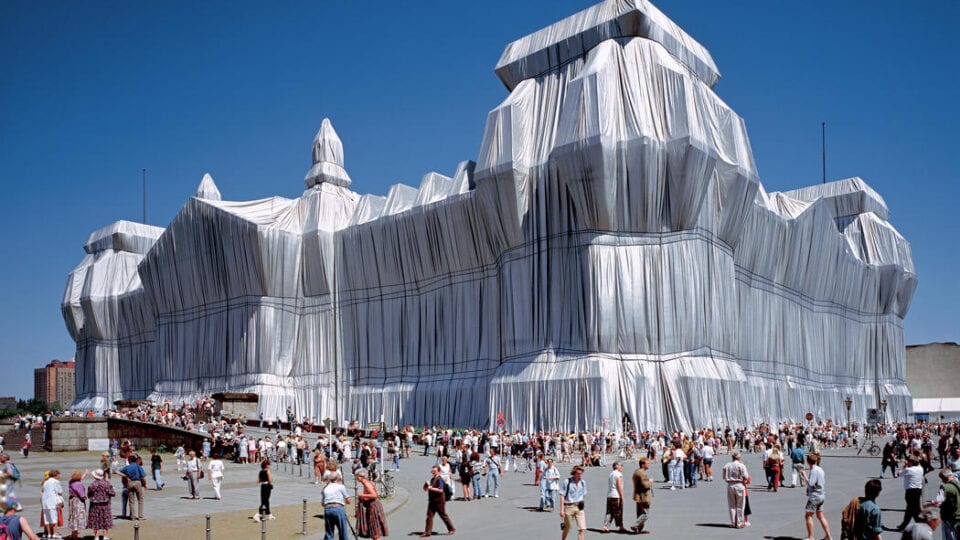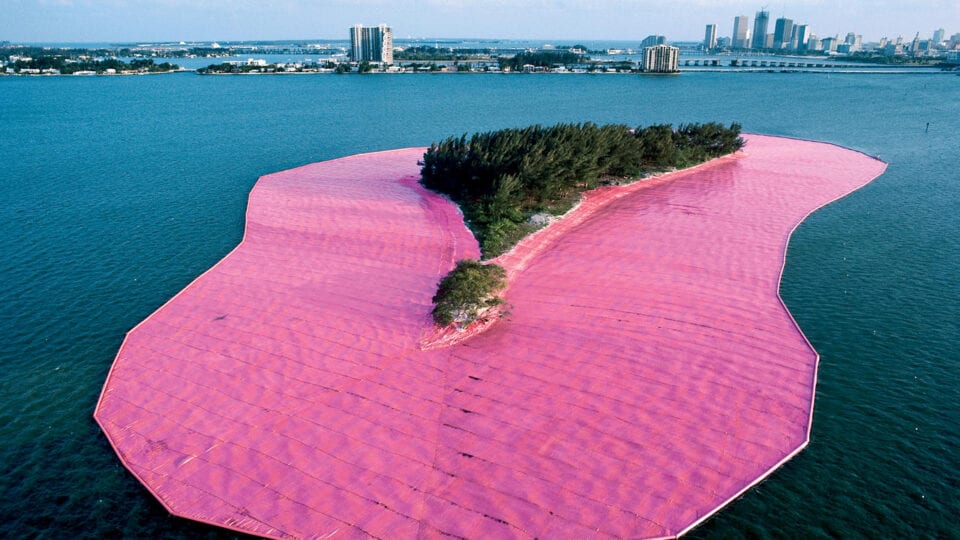Christo (1935–2020) and Jeanne-Claude (1935–2009) are remembered worldwide for wrapping landmarks in brightly coloured fabrics. As a new exhibition opens at Centre Pompidou, Paris, Aesthetica explores five of the duo’s groundbreaking temporary installations.
“All these projects have this strong dimension of missing, of self-effacement,” said Christo. “They will go away, like our childhood, our life. They create a tremendous intensity when they are there for a few days.”

“The mastaba is an extraordinary form… It’s a movement, a burst of strength… It is, above all, the result of a balance of forces.” The London Mastaba was the final outdoor project to be completed in Christo’s lifetime. Made from over 7,500 colourful stacked barrels, the piece floated on the Serpentine Lake within Hyde Park for three months in 2018. The geometric shape takes inspiration from ancient mastabas, which originate from the first urban civilisations of Mesopotamia.
It can now be experienced in VR with Acute Art.

In 2016, Italy’s Lake Iseo was transformed by ribbons of shimmering yellow fabric. For just over two weeks, members of the public could cross the bright, three-kilometre long walkways to reach the island of San Paolo. “Those who experienced The Floating Piers felt like they were walking on water – or perhaps the back of a whale,” Christo explained. “The light and water transformed the bright yellow fabric to shades of red and gold throughout the sixteen days.”

Wrapped Reichstag took 24 years to complete. During the 1970s, 1980s and 1990s, the proposal was rejected three times – due to political tensions and the site’s historic position as the seat of the German parliament. In 1995, it was covered in 100,000 square meters of silver fabric, tied by over 15 kilometers of blue ropes. Millions of visitors traveled to see the work, which combining an original approach to art-making with the memory of draperies from the classical past.
The Pont Neuf is the oldest bridge in Paris, completed in 1606 during the reign of Henry IV. Christo and Jeanne-Claude’s project draws on its rich history of building, demolition and rebuilding. Wrapped began in 1975 and was realised in 1985, cloaking the the structure with 450,000 square feet of golden fabric. For two weeks, its shimmering tones were reflected in the River Seine, adding a new sculptural dimension to the 300-year-old landmark.
This work is at the heart of Centre Pompidou’s show, which traces its history alongside the duo’s wider “Parisian period.”

In 1983, eleven of the islands in Miami’s Biscayne Bay were clothed in bright pink fabric. The luminous colour was chosen to complement the region’s lush tropical vegetation, whilst bouncing off the bright blue sky and ocean. These structures could be accessed by land, water and air over a period of two weeks, highlighting the various ways in which local residents habitually explore the area. 430 people were involved in setting up the installation.
Christo and Jeanne-Claude: Paris! is at Centre Pompidou until 19 October. Find out more here.
Lead image: Surrounded Islands, Biscayne Bay, Greater Miami, Florida (1980-83) Photo: Wolfgang Volz
1. Christo and Jeanne-Claude, The London Mastaba, Serpentine Lake, Hyde Park, 2016-18 Photo: Wolfgang Volz © 2018 Christo
2. The Floating Piers, Lake Iseo, Italy (2014-16) Photo: Wolfgang Volz
3. Wrapped Reichstag, Berlin (1971-95) Photo: Wolfgang Volz
4. Christo and Jeanne-Claude, The Pont Neuf Wrapped (1975–85), Paris. Photo by Wolfgang Volz, ©1985 Christo.
5. The Pont-Neuf Wrapped (1975–85), Christo and Jeanne-Claude. Photo: © Wolfgang Volz; © Christo
6. Surrounded Islands, Biscayne Bay, Greater Miami, Florida (1980-83) Photo: Wolfgang Volz







